This year’s Wearable Robotics Association Innovation Challenge explored what physical augmentation means to the inventors and the audience. To some it meant working more comfortably, to others it meant restoring independence and improving the quality of life, and some asked why should we end there? Both the judges and the public were challenged with a new question, should power augmentation be reserved to just people or can it extend to our pets as well!? Join us as we recap the WearRAcon19 Innovation Challenge: exosuits, exoskeletons and supernumerary limbs, the competition had them all!
UnOrthoDOKS

Knee osteoarthritis is a debilitating condition with no cure. Having knee pain reduces the amount of exercise a person participates in. The solution is a multilayer soft device that braces the knee and reduces the pain during exercise, in effect, an exosuit. The sleeve can stiffen and relax and the control can be improved with machine learning. The current knee braces are painful, annoying to wear and make exercise difficult. The UnOrthoDOKS aims to put an end to all of that.
GripX
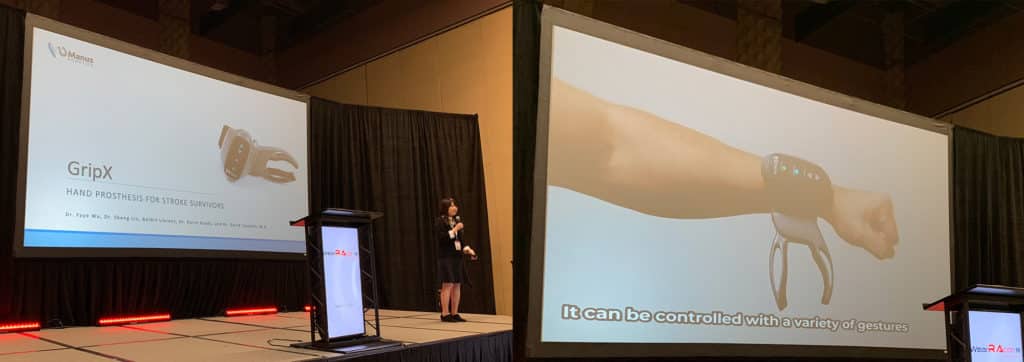
GripX is a post-stroke orthosis for daily living assistance. In essence, it is a clamp that is attached to the disabled arm. The main innovation is a sensor that has pattern recognition which controls the gripper. Therefore the main innovation here is not just the gripper but the software control, which aims to be completely intuitive. This can significantly help people perform daily living tasks. The team anticipates the adoption of the GripX could be much higher compared to an exoskeleton or a power glove (which they view as good for rehabilitation a few hours a day, but not for 8-10 hours per day which is required for tasks for daily living). The next step will be to add an additional degree of freedom to the gripper.
EMG EXO
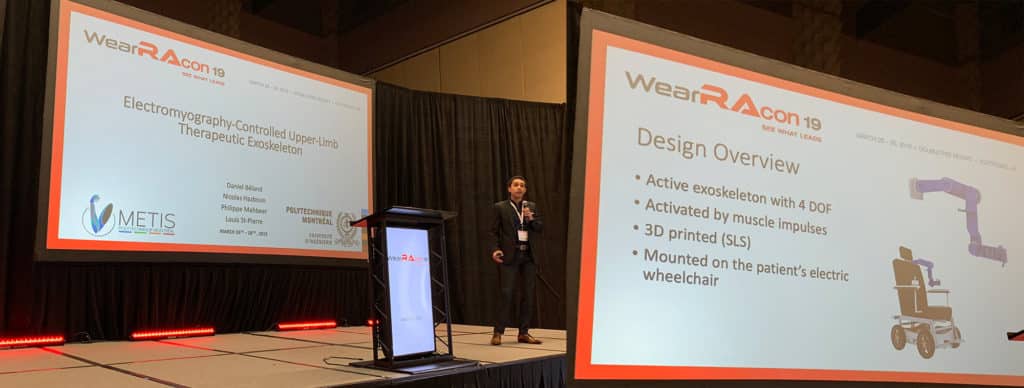
Duchenne/Becker Muscular Dystrophy (DBMD) causes muscle degeneration over time, with immobilization by age 13. The team proposes an active cobot exoskeleton with four degrees of freedom with EMG control. Sensors are spread around the body of the user and the exo is mounted on the wheelchair and uses its power source. A machine learning algorithm then tailors the device for every unique patient. The team hopes to have finished prototypes by 2020.
Third Arm

Third Arm holds a rifle or a tool that can be used for rifle hunting or supporting of a heavy instrument. The main innovation is the material used, a compression molded composite. The envisioned markets are industrial settings, sportsman hunting-shooting, and military weapons or tools. The Third Arm aims to change your perspective of how long can a tool be used with minimum effort in the hand? Note that the hybrid arm does connect to a vest, which could introduce a moment on the spine, which will have to be addressed.
Japet Medical – Atlas
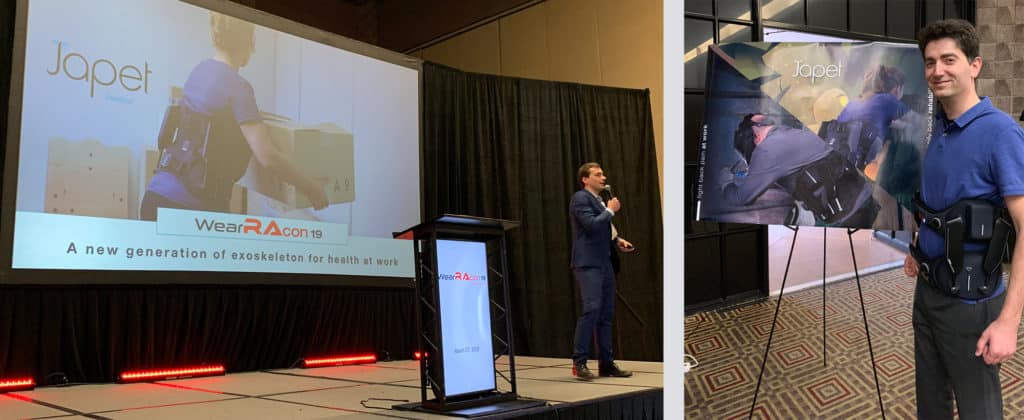
Have lower back pain? How about using a lower back support exoskeleton that aims to relieve pressure on the spine. Four motors connect at the waist and physically pull up on the spine reducing vertebrate compression. This is the same as laying on a bed when someone feels back pain. Without pain, a person can be more productive. The Atlas’ goal is an improvement in the quality of life and is based on already existing static devices that have demonstrated an improvement in spinal decompression. The main difference with the Atlas is that this is a dynamic, active device that can work at multiple angles. Atlas already has CE certificate and the device is on sale with a target for 2022 for home use.
ExoCiser
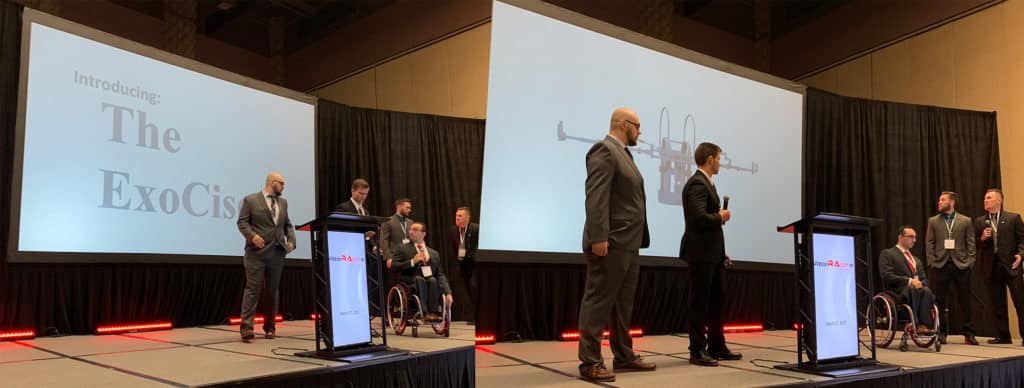
The ExoCiser is envisioned as a home-use upper body physical rehabilitation device. Modern exercise equipment uses gravity, free weights or spring elements, however, they all have a recoil. The recoil is usually not a problem for most but can be dangerous for those with a weakened skeletal muscle system. The proposed solution is a resistive exoskeleton that has no springs, free weights or snap-back. Currently, there is an arm prototype and a scaled down model, but with limited time and funding it will be difficult to build full prototypes. The potential markets are rehabilitation clinics/centers and home-use. “Regain control of our fitness and exercise without limitation.”
Mantis Gear
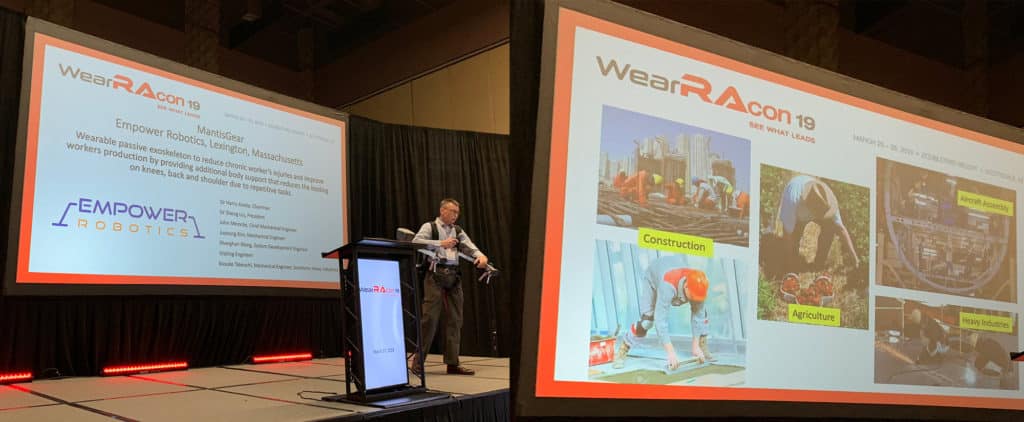
The Mantis-Gear is a wearable that provides upper body support while performing tasks close to the ground. The device is a harness with a shoulder joint, telescoping limbs and lock-release mechanism with a handle user interface. The end-effectors can be removed and customization is allowed for endless applications (such as hooks). The main applications are at floor level to greatly reduce the stress on the back and shoulders. Heavy industries is another application in where the device can adjust the body’s position to make work more accessible. A device like this can, hypothetically, greatly reduce injury and fatigue. The user can be positioned in a convenient place to be more productive. The user has both hands available to perform a task, allowing them to perform “more difficult tasks with a higher quality of work.” There are no known competitors, and five patents have been applied for (one already approved). The next step is to add connectivity with built-in sensors.
Mobility Support for Dogs PawsAble
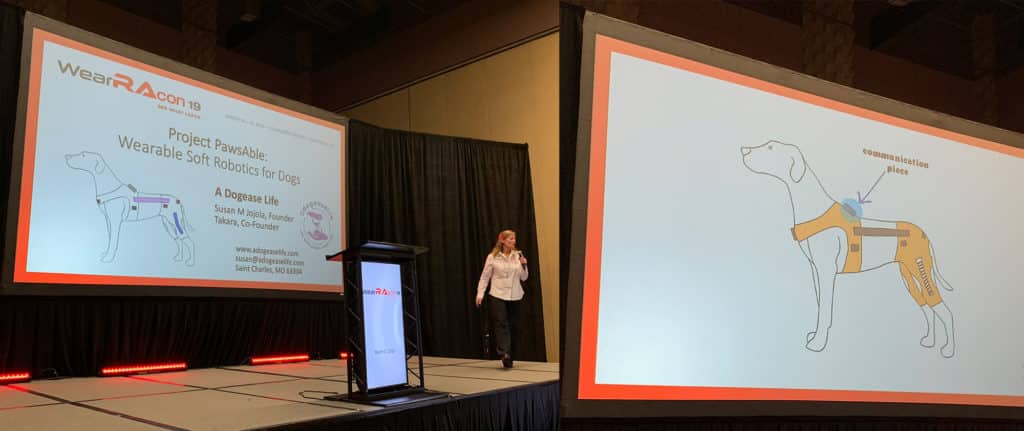
The PawsAble is envisioned to be the next level of mobility support solutions for pets. One in five dogs will experience mobility challenges. As dogs age, their joints become stiff and sore. The device is designed as two harnesses (chest and hind legs) with inflatable, curved soft actuators. The dog receives assistance based on the onboard wearable sensors. There are billions of dollars spent on dog veterinary medical expenses and wearable robotics technology does not have to be limited only to humans.
The 2019 Wearable Robotics Innovation Challenge was judged by the keynote presenter Robert Riner (ETH Zurich), Sigune Suttner, CEO of StraightWalk and Jamie Tyle, Co-Director of the WearTech Center. Without further ado, here are the winners:
Runner Up: GripX and Fan Favorite: Project PawsAble










Add Comment